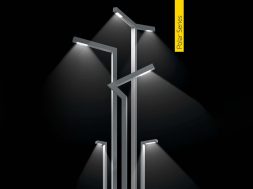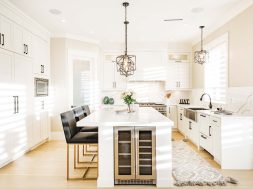Architecture entails a connection with the end user sensibilities

Architecture is for the people. It is meant to ease out and yet bring joy to the common man’s life. It evokes a sense of connection with the user’s needs, requirements and emotions says Khozema Chitalwala, Principal Architect and Designer, Designers Group.
As one of the well-known professionals in the field of architecture and design, how do you believe the profession has evolved over the years?
India has an eloquent background in architecture. It boasts of an architectural diversity like no other in the world. It has also been dynamically changing over the years. Ever since ancient times, Architecture has always been a well-process and thought-driven profession in India. Architects in India have always been able to display very uniquely a beautiful connection between aesthetics and functional elements while designing religious, vernacular and contemporary buildings. With our strong indigenous capabilities, we tend to create an identity for Indian architecture, hence, marking an exclusive statement all around the world.
Do you feel architecture is a discourse much beyond form and function alone?
Absolutely, architecture is a discourse much beyond form and function alone. Architecture is for the people. It is meant to ease out and yet bring joy to the common man’s life. As an architect, we play with various aspects of a built form, beyond form and function, bringing in an evident change in the lifestyle of the user. Architecture has a major psychological impact as it evokes a sense of connection with the user’s needs, requirements and emotions.
Do you feel the pandemic has altered the way architecture and more precisely interior design is perceived, what kind of changes will be visible in the future projects from now on?
Yes, I believe the pandemic has definitely altered the way architecture and interior design is perceived. Although we have been incorporating the SOPs given by the government post lockdown, the changes in design are temporary. Major alteration is manifested in the form of habitual changes. Also, technological advancements and userinteractive designs play a prominent role in refining design sensibilities. From virtual meetings to remote working, the design process and operations have gone under conspicuous transformation due to the pandemic.
From the vintage heritage buildings which have witnessed the evolution of generations to the new age buildings, which are some of your favourite creations in the built environment?
Chhatrapati Shivaji Maharaj Terminus and Salvacao Portuguese Church by Charles Correa located in Mumbai are amongst my favourites. I am also inspired by the work done by architects like Zaha Hadid and Norman foster. I personally feel that existing, historical and ancient architecture teaches us both positive and negative context. One can easily make a dos and don’ts library enthused by the architecture we live around.
Do you feel there is a lot to learn especially from the heritage buildings, more so, because they have redefined their robustness, utility whilst maintaining their aesthetics in the current timeline? Heritage buildings integrate certain unique characteristics and features that support their longevity. I think the architecture of these buildings perfectly amalgamates the context described above, maintenance and aesthetics.
What kind of building design do you feel is apt for a country like India which is populous as also climatically diverse?
Indian architecture is in a state of flux. A state, where we have everything – explorations, opportunities, experiments and evolved sensibilities. A step in the right direction could yield great results. Indian architects today understand that we need to work on our own identity, needs and roots. We need to work towards an architecture that not only adapts to changing lifestyles but stays true to its values and identity; that communicates to people and shapes our society. Being contextual to indigenous architecture is significant for the heritage of the country. Sustainable practices and vernacular architecture translating into contemporary style is the need of the hour.
Cookie Consent
We use cookies to personalize your experience. By continuing to visit this website you agree to our Terms & Conditions, Privacy Policy and Cookie Policy.









